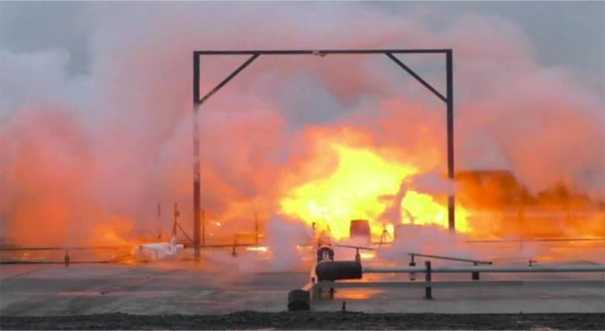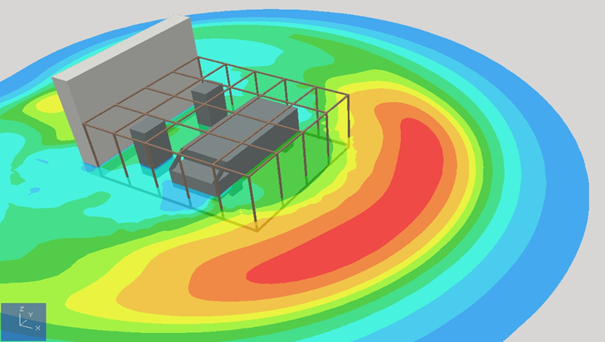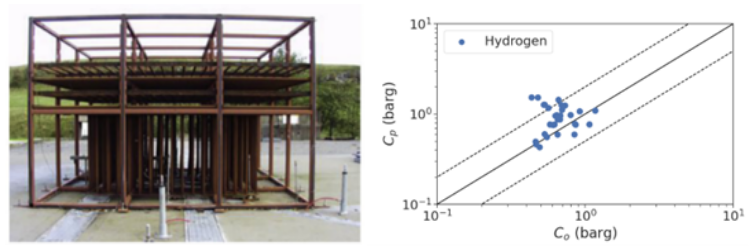Validating the safety case for hydrogen
There is a consensus on the need to shift away from fossil fuels, but the decarbonization market is riddled with uncertainty. Even hydrogen, an essential pathway to net zero and a clean energy future, presents safety concerns. Given the potential risks and complexities associated with the use of hydrogen, there is a pressing need for reliable software models and digital solutions. These tools can help identify and mitigate these risks, ensuring a safer transition to cleaner energy sources. Coupling these models and solutions with rigorous testing and validation is crucial to ensure their accuracy and effectiveness.
For hydrogen to gain broad acceptance and adoption, industry and regulators will have to establish robust safety standards. There is also a growing need to empower stakeholders with the tools and knowledge they require to become ‘part of the solution’.
DNV with its proven safety and risk management experience, is uniquely placed to meet these challenges as it balances the expectations of society with the demands of business.
For those in the oil and gas industry seeking to develop and operate their hydrogen infrastructure, DNV Digital Solutions offers a portfolio of software tools. The portfolio comprises a wide range of software applications, notably Phast, Safeti, KFX, and EXSIM. For over four decades, industry experts have relied on these solutions to model a variety of materials, including hydrogen. These are widely used for their capabilities in modelling the consequences and risks associated with hydrogen releases and have been developed and validated through physical experiments and Joint Industry Projects (JIPs).
Right tools for the job
Trixie Secillano, a technical lead at DNV Digital Solutions Plant Product Line highlights modelling tools designed to simulate the potential consequences of accidental releases of flammable or toxic materials – like a hydrogen leak in an electrolyser facility. Ignition of such flammable releases can lead to significant consequences.
Whilst Phast performs two-dimensional, free-field consequence modelling, KFX and EXSIM delve deeper by modelling accidental releases in the context of complex surrounding geometries. Once the potential extents of the consequences of these releases have been calculated, Safeti comes into play. This tool models the associated risks, considering factors such as the likelihood of the release, potential ignition sources, population density, and more.
She further emphasizes that, “While our models produce predictions, they inherently come with a level of uncertainty. Currently, no tool exists that can perfectly model the outcomes of these releases. However, experts’ trust in the results our software provides is crucial. That is why we prioritize and emphasize the validation and verification of our models against experimental data.”
Validation and verification
“Validation and verification are the very foundations upon which we build trust in any modelling tool” says Trixie and adds. “The emphasis here is not just on the tool's ability to predict outcomes, but more importantly, its capacity to recreate real-world scenarios."

DNV’s Spadeadam Testing and Research Centre plays an integral role with respect to validation. The centre specializes in large-scale testing, simulating full-scale testing to assess the consequences of major hazards. For over four decades, Spadeadam has set the benchmark for experimental validation by creating controlled 'accidents' in a safe environment. This helps DNV and the broader industry in understanding the behaviour of toxic and flammable releases, fires, and explosions, providing invaluable data against which software predictions can be tested.

Reflecting on the journey, Trixie recalls, “From the early days of our software development, both rigorous testing at the Spadeadam Centre and extensive research work have been foundational. This wealth of experimental data has shaped our software and fostered a symbiotic relationship between experimental testing, software modelling, and industry research. Our focus on accuracy is backed by our strong verification process and our involvement in Joint Industry Projects. This ensures our tools are up-to-date and based on practical insights and solid research.”
Energy-transition related modelling improvements
Model development, verification and validation are ongoing activities at DNV for all software tools. The direction of our development is guided by market needs. For example, in light of the significant role that hydrogen is expected to play in the future clean energy mix, we recently initiated a major development drive to enhance the stability and performance of our gas explosion simulator code within the software, specifically for hydrogen explosion scenarios. In brief, the outcome of our activities in this area demonstrates significant improvements in its modelling performance for hydrogen-air explosions.

DNV is part of an ongoing JIP related to modelling of hydrogen within the KFX, our fire and dispersion CFD software. The aim is to validate and improve the software for the use of hydrogen in safety studies under various scenarios. Through our research and development programmes, we are further developing and validating our models to bolster the industry’s confidence in predicting real-world scenarios.
Validating hydrogen safety
One of the projects DNV is involved in is the H21 project, which includes collaboration with the UK government. The project explores the integration of hydrogen into the existing domestic gas network, with a particular focus on the potential for leaks and their consequences.
Partnering with consultants in the safety risk team, the scientists and engineers at Spadeadam developed an extensive experimental program. This program aims to provide quantitative experimental data addressing knowledge gaps in assessing the relative risk of hydrogen in the distribution grid compared to natural gas. This included below ground migration, tracking, accumulation in buildings, ignition, fires, and explosions in or around network infrastructure.
In addition to these experiments, DNV is also involved in various validation assignments related to decarbonization, which covers a range of fields including carbon dioxide (CO2) transport, high pressure CO2, HY4Heat (testing of hydrogen use in domestic properties), and pipeline fracture propagation. There are ongoing projects with ammonia as another alternative fuel.
Importance of collaboration in Joint Industry Projects
Another crucial aspect of DNV’s work is the further development of consequence modelling through computational fluid dynamics (CFD) software, achieved through JIPs. Currently, three projects related to the energy transition are underway. The hydrogen JIP, a three-year collaboration with Equinor, is scheduled to conclude by the end of 2024. Its aim is to enhance the software with respect to advanced hydrogen safety analyses under realistic conditions. The project focuses on modelling hydrogen releases, vapour dispersion, and fires and explosions, providing a solid foundation for safely scaling up hydrogen infrastructure. up hydrogen infrastructure.
Trixie adds, “Due to the energy transition – and the increasing interest in hydrogen from our customers – it’s becoming more important than ever to ensure our models are updated and thoroughly validated.”
Trixie goes on to say, “Another essential point to mention is the impact of digital transformation on the industry, and how DNV is transforming data into reliable insights for our customers and other industry stakeholders. Digital transformation involves breaking down silos and unlocking value to create insights. We can compile data from the entirety of operations, so our models become an integral part of the working environment and provide insights for decision making.
“Undoubtedly, the landscape is changing. It is imperative that, when customers choose us as their trusted partner to assist in their decarbonization journey, all operational aspects are thoroughly considered, and the consequences validated. This ensures that the transition is successful in terms of both safety and sustainability,” concludes Trixie.
Ref. 1: Shirvill LC et al. Experimental study of hydrogen explosion in repeated pipe congestion – Part 1: Effects of increase in congestion. Int. J. Hydrogen Energy 2019; 44:9466-9483.




